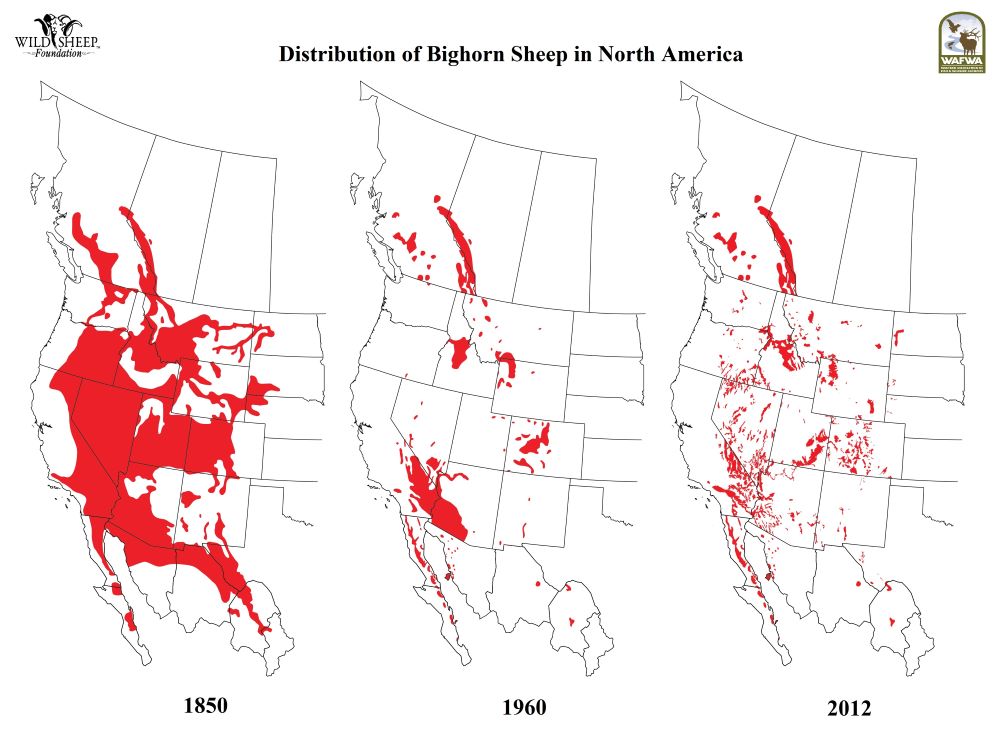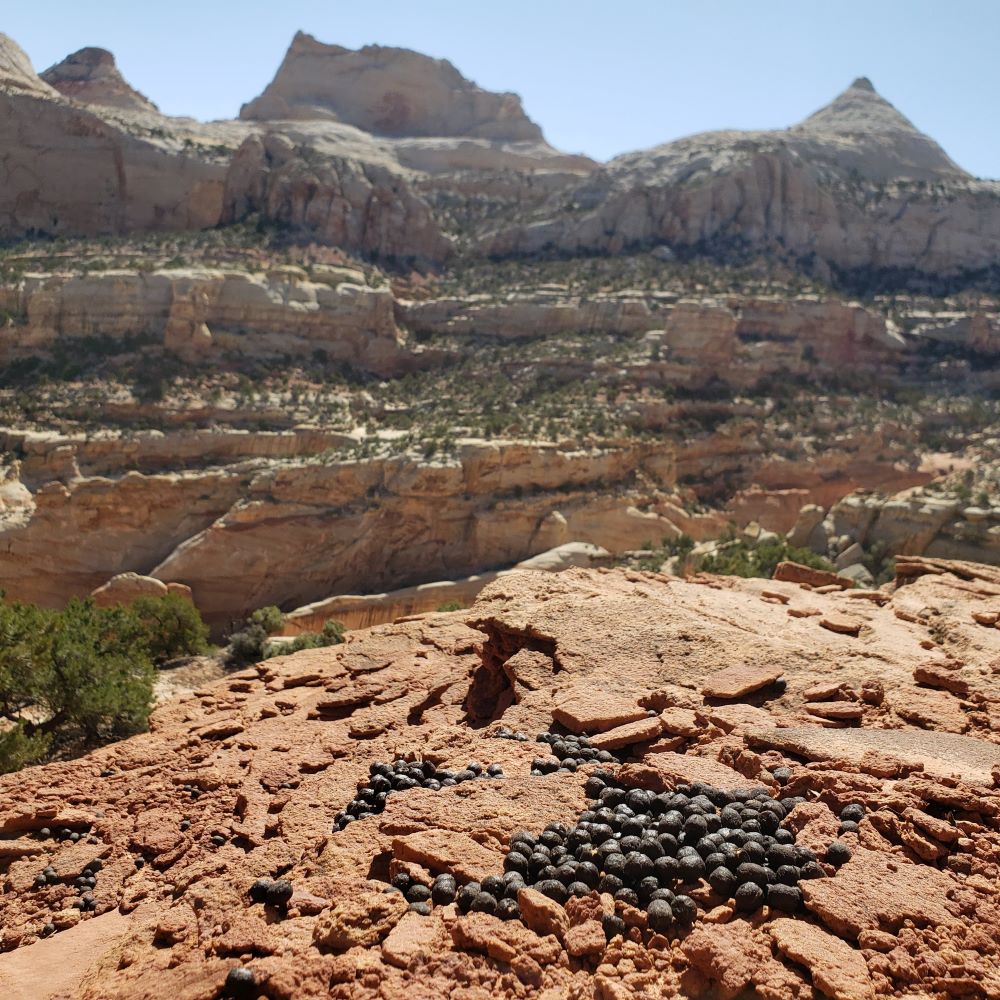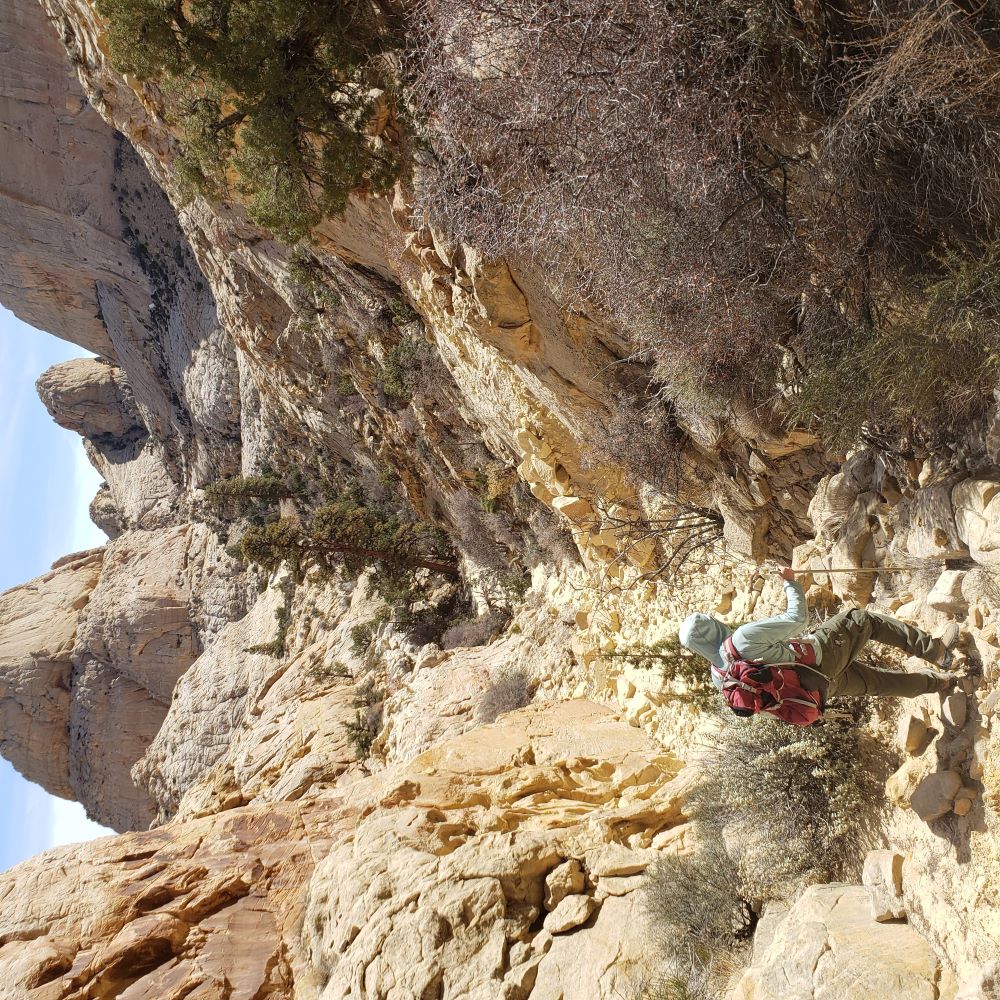Bighorn sheep (Ovis canadensis) are an iconic North American mammal that inhabit rugged mountain and desert ecosystems
from northern Mexico to southern Canada. Bighorns were well-established throughout
these habitats until impacts from increased human settlement began to take a toll
on the species. Widespread population declines and extirpations (local extinction)
occurred from the late 1800s to mid-1900s mainly due to competition and disease transmission
from domestic livestock, habitat loss, and unregulated hunting (Figure 1). Although
there is considerable uncertainty around historic bighorn sheep population estimates,
Father Escalante observed the great abundance of bighorns during the famous Dominguez-Escalante
Expedition of 1776: “through here wild sheep live in such abundance that their tracks
are like those of great herds of domestic sheep” (UDWR 2012).
Watch the short Wild & Wool documentary
Bighorn populations disappeared all over the western U.S., and by the 1940s desert
bighorns (O. c. nelsoni) were extirpated from Capitol Reef National Park (Sloan 2007); by the 1960s, desert
bighorns were barely holding on in small isolated groups on the Colorado Plateau,
such as in Canyonlands National Park. The species was disappearing, and extensive
conservation and management action was needed.
Starting in the 1960s, wildlife managers began an ambitious reintroduction effort
in Utah, capturing some sheep from remaining populations and relocating them to historic
habitats (Singer et al. 2000, Wild Sheep Working Group 2015). In most cases, it worked,
and populations slowly recovered. Within Utah alone, over 1,000 desert bighorns and
1,200 Rocky Mountain bighorns (O. c. canadensis) were transplanted over the past 40 – 50 years (UDWR 2012). This management tool
was used throughout the West, and bighorn relocations have occurred in 15 U.S. states
as well as within Canada, since the first relocation in 1922 (Wild Sheep Working Group
2015). Relocation is still used as a management tool today. The sheep of Capitol Reef
National Park, and in many areas in Utah and the West, are therefore native transplants
that have reestablished parts of their historic range.
Although reintroductions in Utah and the West have been largely successful, particularly
for desert bighorns, bighorn sheep still face many threats, especially disease transmission
from domestic livestock (the primary threat – watch the short Wild & Wool documentary), habitat loss from development, and more recently disturbance from recreation
(Papouchis et al. 2001, Sproat et al. 2020). The latter is particularly relevant in
Capitol Reef National Park given the dramatic increase in park visitation: in 2019
approximately 1,226,519 people visited Capitol Reef National Park, increasing 50%
from 2014 (786,514 visitors) and more than double 2008 visitation (604,811; NPS Stats).
There are more people on trails, more people in the backcountry, and the ‘busy season’
is longer, which all increase the likelihood of bighorns being disturbed by people.
Seasonal closures of critical habitat, such as during lambing season, can help mitigate
the effects of increased visitation, but closures need to be justified by current
data and should be targeted to maximize benefits to bighorn sheep while minimizing
impacts on park visitors. Continued research and management are therefore needed to
ensure persistence of these populations.
Within this complicated and fascinating context, Capitol Reef Field Station (CRFS),
UVU, and NPS scientists are studying desert bighorns in Capitol Reef National Park
using motion-sensor cameras and DNA extracted from bighorn scat. We are using these
non-invasive techniques to better understand desert bighorn distribution, abundance,
habitat use, and genetic population connectivity in order to improve management and
help ensure that this iconic species persists in the wild (Figures 2-6).

Figure 1. Change in bighorn sheep distribution over time - (Western Association of Fish and Wildlife Agencies and the Wild Sheep Foundation)

Figure 2. Motion-sensor wildlife cameras for CRFS/UVU/NPS research on desert bighorn
sheep in Capitol Reef National Park - Photo: J. Ceradini

Figure 3. Wildlife camera mounted to tree in the Kayenta rock layer far above Capitol
Gorge in Capitol Reef National Park - Photo: J. Ceradini

Figure 4. Desert bighorn sheep scat on a Kayenta bench far above Grand Wash (Fern's Nipple Navajo sandstone dome in the distance), Capitol Reef National Park.
Scat surveys were conducted at each site and DNA was extracted for genetic analysis
in a UVU genetics lab. - Photo: J. Ceradini

Figure 5. One of the many beautiful and challenging backcountry field days on the
bighorn project, Capitol Reef National Park - Photo: J. Ceradini

Figure 6. Desert bighorn ewe (female) and lamb, Capitol Reef National Park - Photo: wildlife camera from CRFS/UVU/NPS bighorn research







